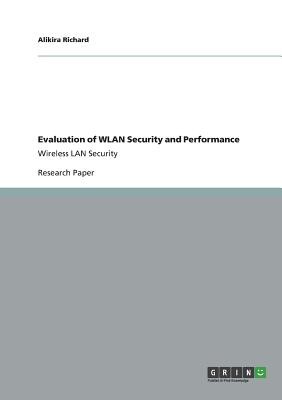
- We will send in 10–14 business days.
- Author: Alikira Richard
- Publisher: GRIN Verlag
- ISBN-10: 3656331308
- ISBN-13: 9783656331308
- Format: 14.8 x 21 x 0.5 cm, minkšti viršeliai
- Language: English
- SAVE -10% with code: EXTRA
Reviews
Description
Research Paper (postgraduate) from the year 2012 in the subject Computer Science - Internet, New Technologies, Kampala International University (School of postgraduate studies/computer department), course: Network security, language: English, abstract: This report addresses the reality of Wireless LAN security and performance. It provides an overview of security mechanisms and explains how security works in Wireless LAN networks. An in depth analysis of the Wired Equivalent Privacy (WEP), Wi-Fi protected access (WPA) and WPA2 standards is presented. The security vulnerabilities that exist in them are analyzed and explained. An experiment involving four devices (Dlink, Linksys, nanostationloco2 and a WBS) was done at Kampala international university. It was discovered from literature that most people prefer using WEP yet it is least secure. One study says 30% of all WLANs detected during network discovery experiment operate with WEP encryption. The study further proved that WEP can be compromised with 100% success. It was also discovered during the experiment that factors such as line of sight, obstruction, distance, antenna type, channel being used all affect network performance. The findings of this experiment can be used as guideline choosing the right encryption method and in designing a WLAN.
EXTRA 10 % discount with code: EXTRA
The promotion ends in 21d.20:05:57
The discount code is valid when purchasing from 10 €. Discounts do not stack.
- Author: Alikira Richard
- Publisher: GRIN Verlag
- ISBN-10: 3656331308
- ISBN-13: 9783656331308
- Format: 14.8 x 21 x 0.5 cm, minkšti viršeliai
- Language: English English
Research Paper (postgraduate) from the year 2012 in the subject Computer Science - Internet, New Technologies, Kampala International University (School of postgraduate studies/computer department), course: Network security, language: English, abstract: This report addresses the reality of Wireless LAN security and performance. It provides an overview of security mechanisms and explains how security works in Wireless LAN networks. An in depth analysis of the Wired Equivalent Privacy (WEP), Wi-Fi protected access (WPA) and WPA2 standards is presented. The security vulnerabilities that exist in them are analyzed and explained. An experiment involving four devices (Dlink, Linksys, nanostationloco2 and a WBS) was done at Kampala international university. It was discovered from literature that most people prefer using WEP yet it is least secure. One study says 30% of all WLANs detected during network discovery experiment operate with WEP encryption. The study further proved that WEP can be compromised with 100% success. It was also discovered during the experiment that factors such as line of sight, obstruction, distance, antenna type, channel being used all affect network performance. The findings of this experiment can be used as guideline choosing the right encryption method and in designing a WLAN.


Reviews